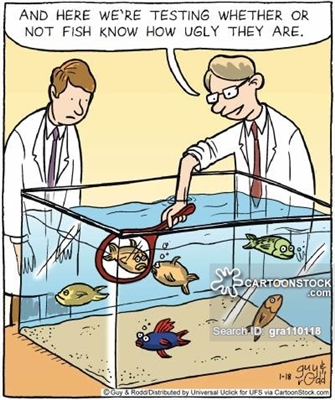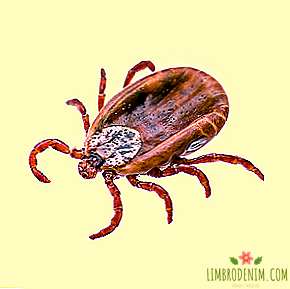Wildlife horrors: I save animals from people
I am an architect by education. After school I studied in Paris,and then it seemed to me that this is the right choice. When I finished, I realized that I didn’t want to work in a bureau and needed to travel to different countries in order to understand myself. The first thing I went to Southeast Asia. There I drew a lot and over time began to notice that I increasingly chose animals — that was how a series of watercolor works was born. At the same time, I realized that just drawing is not enough. I wanted to work with animals, communicate with them and help them.

Darrell Academy
I always knew that some species disappear, but I did not even know how critical the situation was. I began to study the question, and a real black hole opened up before me. The starting point was the book Ark on the Island by Gerald Durrell about a special park on the island of Jersey in England, where he brought animals from all over the world, replicated in captivity, studied, and then released it in a wild environment. I decided that since this place is so well described, then surely it exists in reality. So I went to the Darrell Academy on the course "Conservation of Endangered Species" - one of the few open to all. The program lasts a couple of weeks and is devoted to practices for the restoration of wildlife populations on the verge of extinction.
The Darrell Wildlife Conservation Fund itself consists of three parts: a zoo, a research department where employees study and breed animals, and an academy where they invite experts to share experiences. People from all over the world came to study: a woman from America who previously worked for the National Geographic magazine and now carries gorillas, a girl from Indonesia who works in a park in Sumatra and is struggling with palm oil production, deforestation and the disappearance of orangutans; there were a lot of people who study for environmentalists. There were zoo-boosters who work in this park. And, of course, amazing teachers - some of them are engaged in the restoration of populations in Madagascar and Mauritius.
Phuket Rehabilitation Center
After a course at the Darrell Academy, I decided to go on an internship or volunteer work in an organization to restore a rare species of population. Often such programs are very expensive: short and free ones are unprofitable for animal protection projects themselves. Learning basic skills alone takes several weeks, and if a volunteer arrives just for a month, the organization spends much more effort than it gets in return.
I was very lucky and I quickly found a free volunteer program in Thailand. However, the condition was that I promised to work six days a week and stay for at least three months. So I went to work in a gibbons rehab center. It was necessary to make a huge number of vaccinations - and not to ensure that the animals did not infect you, but to make sure that you did not infect them. I had the opportunity to participate in almost everything: I told the tourists why they should not be photographed with wild gibbons, fundraising, taking care of animals, preparing them food, cleaning them, making them entertainments and going to the forest to watch how those who were already behave released.
The rehabilitation center itself is located in Phuket, where gibbons disappeared thirty years ago. With the help of this project, more than thirty individuals were able to be released into the wild environment - this is considered an excellent result. In fact, gibbons are not even quite monkeys: there is a difference between "ordinary" monkeys and apes. Gibbons are much more like humans. At the same time, unlike other anthropoids, they almost never descend from trees, where they jump from branch to branch with wild speed.
Gibbons which are used in the tourism business fall into this center. In Thailand, this is a big problem: visitors like to be photographed with monkeys. Their "owners" will certainly say: "Oh, that cute monkey knocked on my door, and I sheltered her."
In fact, it's not at all like that. To get a living toy, a person goes into the woods and kills the mother of the gibbon, because the baby lives in her belly for up to two years. Since gibbons protect each other, the father and other family members are also not left alive. One gibbon is taken for photographs with tourists, and it serves them for a maximum of five years. When he grows up, his fangs appear, he starts to sing loudly and becomes aggressive - in a word, it is no longer suitable for selfies on the beach. In the wild, gibbons live for up to thirty years, in captivity - up to fifty. But in our case, at five, they are either killed or left on the street. If they are very lucky, then they get into a rehabilitation center, and then they have a chance to return to the forest one day.
Travel business - a great evil for wild animals. For example, we must understand that if the beast has big eyes, then he is most likely awake at night. Such eyes allow the same thick lori to see better in the dark. And if they are active during the day, their eyesight deteriorates, and this is a huge stress for animals. With thick Lori, too, they often take pictures - and in order to be vigorous during the day, they are pricked with small doses of drugs that increase activity.

Vietnamese Wildlife Center
After gibbons, I wanted to work with animals that are not so much like humans. I began to study what initiatives for the protection of fauna are in Southeast Asia, and found the project Save Vietnam's Wildlife, which protects pangolins and small predators in Vietnam. They take animals from smuggling, treat and release them back into the forest. Pangolins are the only mammals with scales, and they look like little dinosaurs. They are catastrophically unlucky: they are now in the first place in the list of illegal trafficking in wild animals in the world. In Southeast Asia, their scales are used in traditional medicine - they are pulled out from under the skin, dried and sold. I do not know how effective the drugs from it are, but it seems to me that it is simply immoral to kill so many animals when there is modern medicine. In addition, pangolins, especially babies, are put into the soup - and because of all this, they are on the verge of extinction.
I was invited to Vietnam as an artist to paint a room for children at Save Vietnam's Wildlife Educational Center. But I was lucky, and I managed to take part in the rest of the activity: I helped care for animals and even assisted in removing pangolins from smuggling. Once the rangers called us and asked to pick up the intercepted individuals. The animals were found on the train, where they were illegally transported under the lower shelves in a compartment - they were tied in bags. In addition, smugglers gave them milk with corn to feed them, because these animals are sold by weight (another popular way is to drive water under the skin). We arrived, inspected, determined the sex, weight, appearance and transplanted into large boxes - pangolin is calmer in the dark. That same evening we took them to our center, treated the wounds and pulled out a couple of hundred ticks. These individuals were in terrible condition and survived by a miracle.
Travel business
In poor countries, where the tourist business is developing, animals are actively used. One of the clearest examples is the elephants, which everyone loves to ride. In the industry, they fall in a terrible way. There are people whose profession is to catch a baby elephant and then beat it with reinforcement - this continues for some time, until one night a person appears who allegedly saves the animal and takes it with him. The elephant becomes life grateful to him, not suspecting that the situation has been removed: it’s better to carry tourists than to be beaten every day. At the same time, riding an elephant is dangerous both for an elephant and for a person. If the tourist is not stopped by the fact that the elephant was beaten in order to ride on it, then maybe at least the fear of getting infected will work: these animals suffer a lot of diseases, including tuberculosis. In addition, their spines are not designed for transportation: after fifty - one hundred kilograms of their backs every day they start to hurt and they die faster.

Why is it important
I always had a suspicion that there are few animals. No wonder in the wild they always have to look for a long time: even in the national parks of Kenya, you will see a lion only if you ride plenty in the park and look for him. When you read children's books, it seems that if you get into the rainforest, you will definitely get out of it with a hundred different bugs on your clothes. But this is not so: in Madagascar from the rainforest you can go out without a single “companion” at all - they disappear, and you can see it.
The problem of preserving wild animals is that the world is full of biologists - but there are no other specialists at all, for example, PR people. Moreover, in this area there is absolutely no money, despite the efforts of celebrities. So, at the Darrell Academy they explained to me that, knowing how to draw, I would bring much more good with the help of art. There are several ways. For example, a person sees an animal in a picture, and it causes him emotions. It works to some extent like a zoo, when you start thinking about a particular animal, its fate, its population in general. In addition, the image may be presented some facts that cause compassion, or at least interest.
Even with the help of art, you can engage in fundraising to raise money for animal protection projects. Another option is working with local people. For example, in the Biological Museum. KA Timiryazeva in Moscow, I conducted classes for children and adults, where they drew, sculpted and made applications. In parallel, I told what kind of animals they were and what was happening to them now, why they should be protected. The work in poor countries is also very important, because it is the local people who decide a lot: they will either go hunting or not.
Animals are part of the biodiversity of the planet, and when one species dies out, another one dies, followed by plants, and then people. Bats play an enormous role in the biodiversity of some regions, they spread the seeds of plants. No bats - no trees, no trees - there are floods. A couple of years ago a huge campaign to protect bats unfolded in Mauritius: the locals began to actively kill them, not thinking about the consequences. Nobody creates such evil from the principle - it seems to me that most people do it thoughtlessly, just as they take pictures with wild animals and ride elephants. People just don't have enough education. It is a shame that in Russia the school curriculum in geography and biology does not give a sufficient idea of how everything in nature is interconnected and what influence a person has on the environment.
I currently live in Singapore and work for ACRES, a charitable organization for the protection of wild animals. We have a hotline where you can call if you saw a wounded animal, or, for example, a huge snake crawled into your house or a bat flew. We will take them, heal them and release them back into the wild. We are also fighting smuggling, giving lectures, conducting master classes - in general, like many other animal protection projects, we are trying to make this world a better place and preserve the biodiversity of the planet.
Photo:gnomeandi - stock.adobe.com, Hanoi Photography - stock.adobe.com, Arndale - stock.adobe.com





